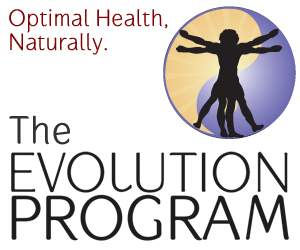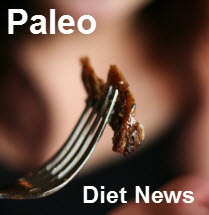Paleo Herbs and Spices
Do Herbs Play A Part In The Paleo Diet?
With the perceived focus on eating animal foods on the paleo diet, it’s easy to lose sight of the fact that plant-based nutrition is important too. This question on Paleo Hacks caught my eye recently:
Are Herbs A Missing Link?
Do we do better with the inclusion of phytochemicals in our diet? To what extent?
Should they be used to regulate a carnivorous diet like the Masai might have been doing?
Have we evolved using herbs in addition to meat, not so much vegetables?
Who would not benefit from some green tea?
I’m a big fan of herbs - such is my interest, I even hold a diploma in herbalism (although I don’t practice, and my use of herbs is limited to culinary and personal therapeutic purposes). This got me thinking about the use of plant foods on the paleo diet, and – in particular – the use of herbs and spices. Plants do contain beneficial phytochemicals and nutrients, but many also contain significant levels of toxins. In fact, it’s precisely because of these potentially poisonous factors that many plants are medically therapeutic.
One of the best sources of information on the use of plants as medicine is the herbalist Susun Weed. The sheer volume of information she has made available on the internet is phenomenal, and . Incidentally, Susun Weed was responsible for me finding my way to paleo, but that’s another story for another time…
Susun Weed, on her goat farm in the Catskill Mountains. Photo courtesy of www.susunweed.com
She helpfully classifies herbs into four categories.
Susun Weed’s Four Categories Of Herb
1. Nourishing
These are the safest of all herbs. They contain few or no alkaloids, glycosides, resins, or essential oils (all of which can be poisonous).
Nourishing herbs are eaten as foods, cooked into soups, dried and infused, and made into vinegars. They provide a range of nutrients, including vitamins, minerals,, proteins, phytoestrogens and phytosterols, bioflavonoids, carotenes, and essential fatty acids (EFAs).
Examples are: Burdock root; chickweed; elder; mushrooms; nettle; oatstraw; red clover; seaweeds; violet.
2. Tonifying
These are generally considered safe when used in moderation. They may contain alkaloids, glycosides and essential oils, but not quantities sufficient to do harm.
Tonifying herbs act slowly in the body and have a cumulative effect. They are most beneficial when used over a longer period of time. They may be used regularly for decades if desired.
Examples are: Burdock seeds; chasteberry; dandelion; echinacea; ginseng; horsetail; yellow dock.
3. Stimulating/Sedating
These frequently contain essential oils, alkaloids, glycosides, or resins. Because these substances cause strong physical reactions, stimulating/sedating herbs tend to have fast and pronounced effects.
These herbs are most often prepared as tincture, vinegars, teas, and infusions. Many are used as seasonings in cooking as well.
Long-term use of these herbs can lead to dependency, so dose and duration of use must be carefully monitored. A moderate to large dose, taken infrequently, will usually produce the best results.
Examples are: The leaves of aromatic mints (e.g. catnip, lavender, lemon balm); cinnamon; licorice root; uva ursi; valerian.
4. Potentially Poisonous
These always contain alkaloids, glycosides, resins, or essential oils. And they contain large quantities of those poisons, often in very potent forms.
These plants can cause death directly, through the actions of their poisons, or indirectly, by causing the liver and/or the kidneys to fail (as they attempt to cope with and clear the poison from the system).
Potentially poisonous herbs are usually extracted into alcohol (tinctures) and used in tiny doses (1-3 drops). For safety’s sake, these should be used as infrequently as possible and for the shortest possible time.
Examples are: Belladonna; castor; goldenseal; nutmeg; poke root; tansy; wormwood.
Exploring Herbs For Yourself
You can find out more about Susun Weed’s work in her excellent free online article series Be Your Own Herbal Expert.
She also reminds us of the great nutritive value of herbs through the use of nourishing herbal infusions. I regularly make and drink these. Not only are they good for my nutritional profile, they’re also delicious! I’m particularly fond of red clover and oatstraw, but also enjoy nettle, comfrey, linden, hawthorn, and burdock.
Using Herbs On The Paleo Diet
From a paleo perspective, which herbs and spices might enhance the diet? Well, Robb Wolf has some great information on his site, in 8 Herbs And Spices You Should Get To Know.
You can really get stuck in at the deep end with Paleo Diet Lifestyle, and Growing Your Own Herb Garden.
Now there’s no reason not to make some space for delicious herbs and spices in your paleo diet. Bon appetit! Or, perhaps as Susun Weed would say: “green blessings”!
Basil and green onions - two common culinary herbs. Photo courtesy of Wikipedia.
Do you have a favourite herb or spice? Let us know about it below - and feel free to share the herby love with your friends by sharing on Facebook and Twitter.
Brian Cormack Carr is a life and career coach, charity CEO, writer, and advocate of a real foods diet.
His home on the web is www.cormackcarr.com where you will find more articles, his free Lifecrafting Newsletter, and information about his online career-creation programme www.vitalvocation.com.
You can follow Brian on Twitter: @cormackcarr





